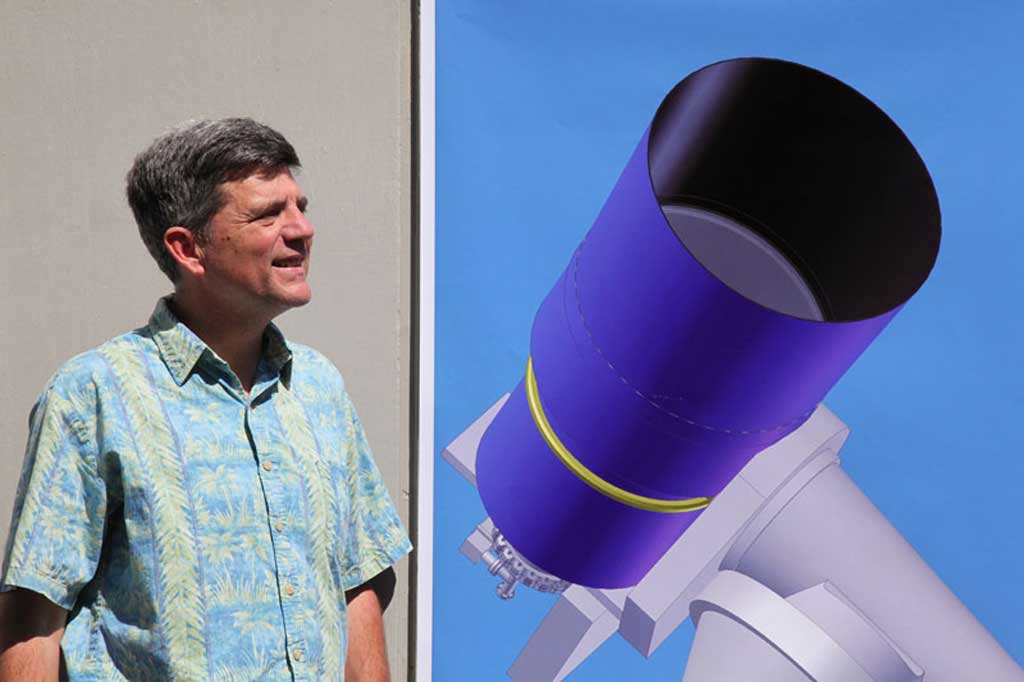With the aid of a $5 million grant from NASA, a University of Hawaii team of astronomers is developing Asteroid Terrestrial-Impact Last Alert System (ATLAS), a system to identify dangerous asteroids before their final plunge to Earth. The team is on track to build and operate an asteroid detection system that will patrol the visible sky twice a night looking for faint objects moving through space.
ATLAS will operate up to eight small telescopes, each fitted with cameras of up to 100 megapixels, on mounts housed at one or two locations in the Hawaiian Islands. Astronomers expect the system to be fully operational by the end of 2015.
John Tonry compared ATLAS’s sensitivity to detecting a match flame in New York City when viewed from San Francisco.
The team predicts the system will offer a one-week warning for a 50-yard-diameter (45 meters) asteroid or “city killer” and three weeks for a 150-yard-diameter (135m) “county killer.” (As a comparison, the Russian asteroid was only 18 yeards [17m] wide). “That’s enough time to evacuate the area of people, take measures to protect buildings and other infrastructure, and be alert to a tsunami danger generated by ocean impacts,” Tonry said.
The typical asteroid is a “rubble pile” — a large collection of rocks and dust. Most asteroids reside in the main asteroid belt between Mars and Jupiter, though some, called near-Earth objects, can orbit much closer to Earth. Sometimes the gravitational tugs from the planets in the solar system send one of the asteroids on a collision course with Earth.
Had the meteor that disintegrated in the atmosphere above Chelyabinsk, Russia, on February 15 arrived at Earth at a different time of day, it could have exploded over Moscow, Belfast, Dublin, or any number of other cities with a latitude similar to that of Chelyabinsk.
Had the much larger asteroid 2012 DA14 that coincidentally passed by Earth on the same day been the one that hit Chelyabinsk, the entire city would have been completely destroyed. Scientists estimate that such a “city killer” impacts Earth about once every few hundred years. The most recent such impact occurred about 103 years ago — the Tunguska impact — in Siberia.
ATLAS will complement the Institute for Astronomy’s Pan-STARRS project, a system that searches for large “killer asteroids” years, decades, and even centuries before impact with Earth. Whereas Pan-STARRS takes a month to complete one sweep of the sky in a deep but narrow survey, ATLAS will search the sky in a closer and wider path to help identify the smaller asteroids that hit Earth more frequently.
As well as searching for asteroids, ATLAS will also look for dwarf planets, supernova explosions, and flashes of light that occur when a star is gobbled up by a supermassive black hole in a distant galaxy.










